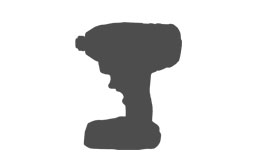Quick Select
Select specific models or manufacturers you want to see
Comparison tables not only compare products they organize product details into a normalized readable format. SpecLook does the hard work for you by finding all of the information from multiple sources, normalizing the values, and organizing all that data into easy to read tables. SpecLook tables allow you to search, sort, and filter, making it easier to find the details that are most important to you.
The comparison table on this page shows all products available for this type. You can use the filters section next to the table to narrow down the listings, OR you can select only the products and/or manufacturers you would like to see by selecting them here and then clicking the Customize Table button.
Most Popular
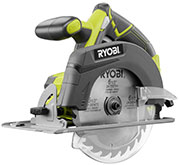
Others
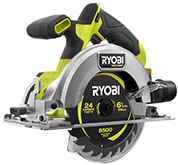
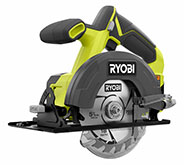
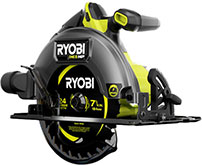
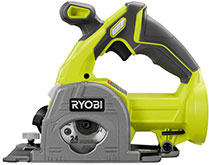
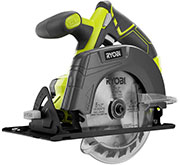
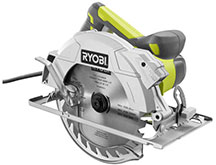
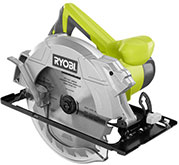
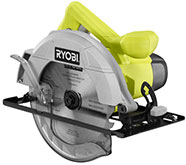
Most Popular
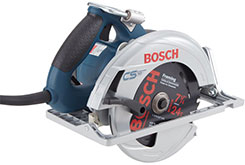
Others
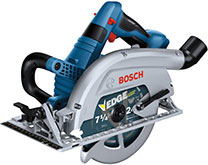
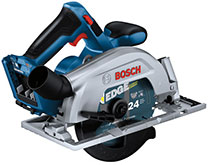
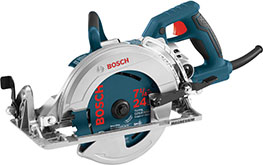
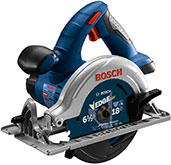
Most Popular
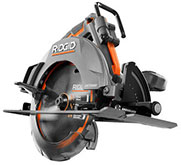
Others
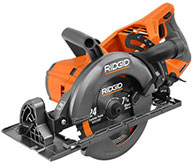
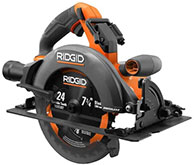
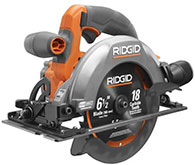
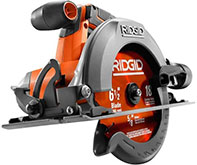
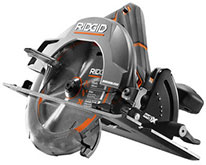
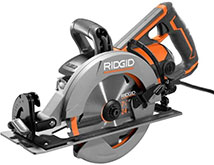
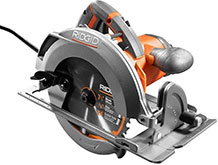
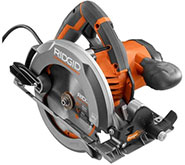
Most Popular
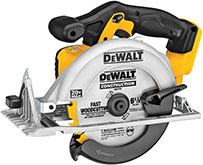
Others
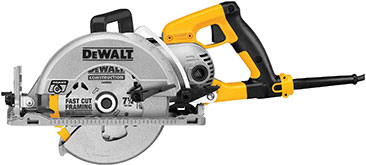
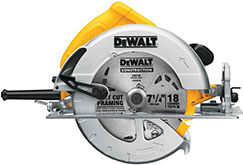
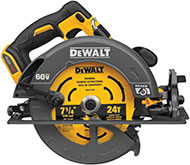
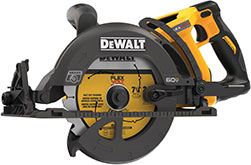
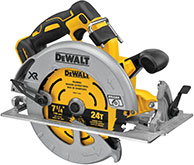
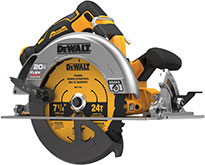
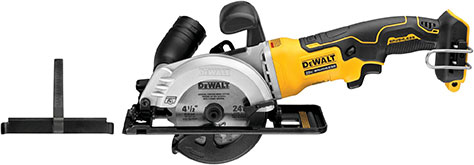
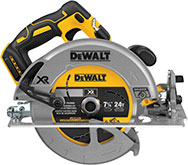
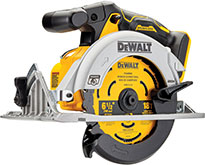
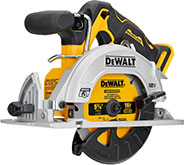
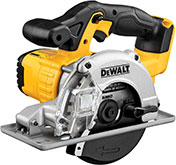
Most Popular
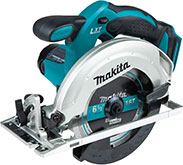
Others
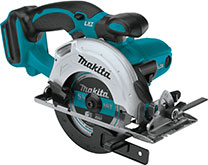
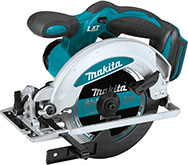
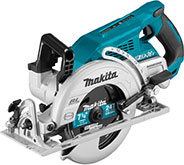
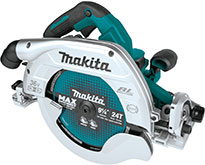
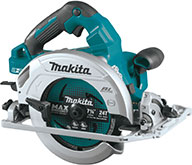
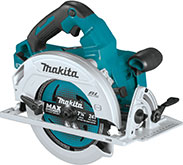
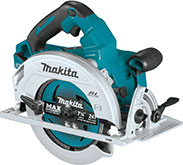
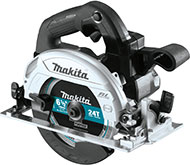
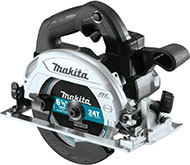
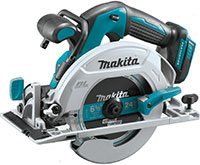
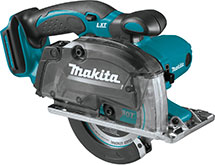
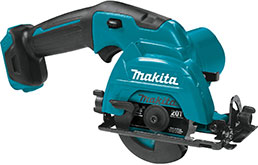
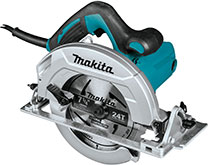
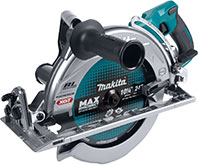
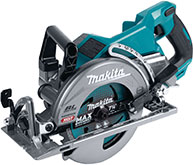
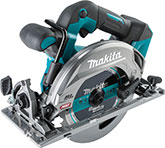
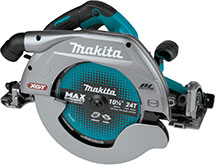
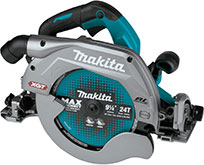
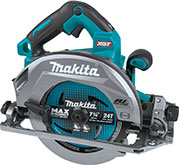
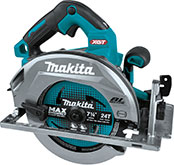
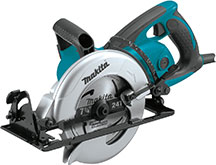
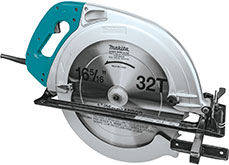
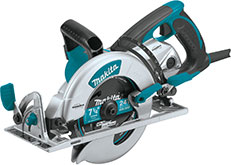
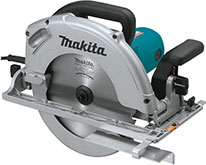
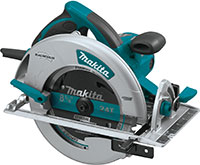
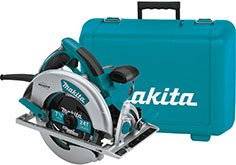
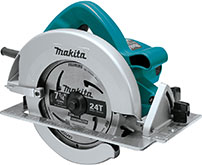
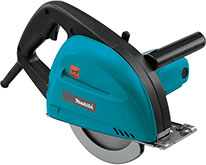
Most Popular
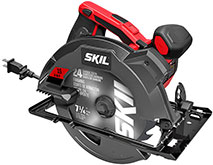
Others
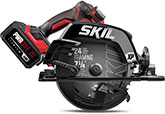
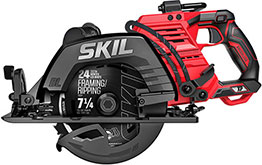
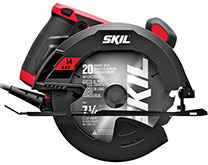
Most Popular
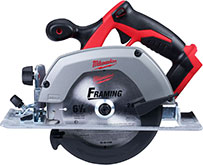
Others
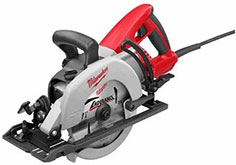
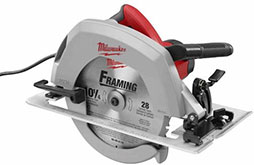
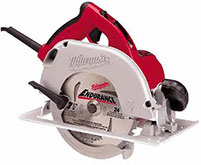
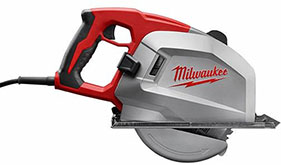
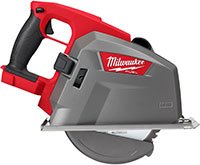
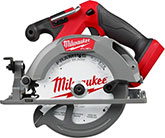
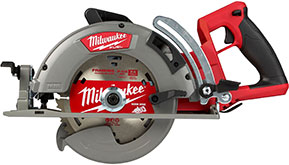
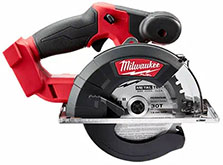
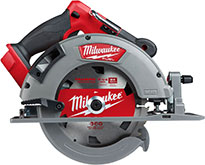
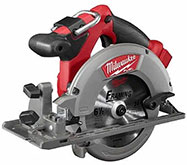
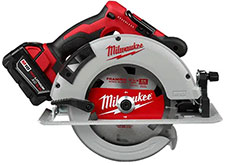
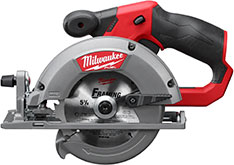
Most Popular
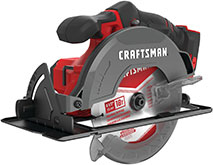
Need help choosing which product fits you best? Click Here
Comparison Awards
Awards are based on the comparison of details and specifications gathered for each product. SpecLook does not favor or promote any specific products or manufactures over any others.
Filters
You can also sort some of the columns by clicking the column titles.
Compare Circular Saws
(Hold Shift while scrolling to scroll horizontally)
| Product | Compare | Image | Category | Manufacturer | Model | Avg. Price | Links | Avg. Rating | Total Rating Count | Ratings | Dimensions (HxWxD) | Weight | Power Type | Battery System | Motor Type | Amps | Battery Type | Voltage | Cord Length | Blade Size | Arbor | Blade Side | Max Bevel Capacity | Min Bevel Capacity | Max Cut Depth at 45° | Max Cut Depth at 0° | Max Speed | Saw Drive Type | Dust Extraction | Included | Extra Features | Certifications | Manufacturer Warranty | Price |
|---|---|---|---|---|---|---|---|---|---|---|---|---|---|---|---|---|---|---|---|---|---|---|---|---|---|---|---|---|---|---|---|---|---|---|
| Ryobi 18V ONE+ 6 1/2" CIRCULAR SAW (P507) |
 Image provided by: www.ryobitools.com Image provided by: www.ryobitools.com |
Circular Saws | Ryobi | P507 | 1 | Check Price at Amazon | 4.620 | 3,278 | Home Depot4.6 / 5.0 (2506) Ryobi4.7 / 5.0 (772) |
10.5 in x 6.5 in x 11.75 in (26.67 cm x 16.51 cm x 29.85 cm) |
5.000 | Cordless | RYOBI 18V | Brushed | 0.000 | Lithium-Ion | 18 | 6.500 | 5/8 in | Left | 50.000 | 0.000 | 1.440 | 2.060 | 4,700 | Sidewinder | Blade | Keyed Blade Change | 3 Year | Check Price at Amazon | ||||
| Ryobi 18V ONE+ HP BRUSHLESS 7-1/4" CIRCULAR SAW (PBLCS300B) |
 Image provided by: www.ryobitools.com Image provided by: www.ryobitools.com |
Circular Saws | Ryobi | PBLCS300B | 1 | Check Price at Amazon | 4.720 | 2,258 | Home Depot4.7 / 5.0 (1698) Ryobi4.8 / 5.0 (560) |
11 in x 13.5 in x 7.25 in (27.94 cm x 34.29 cm x 18.42 cm) |
6.500 | Cordless | RYOBI 18V | Brushless | 0.000 | Lithium-Ion | 18 | 7.250 | 5/8 in | Right | 56.000 | 0.000 | 1.750 | 2.438 | 4,300 | Sidewinder | 1 1/4" Vacuum Dust Adaptor Included | Blade, Allen Wrench | Keyed Blade Change, Spindle Lock, Electric Brake | UL Listed | 3 Year Manufacturer Warranty | Check Price at Amazon | ||
| Ryobi 15 AMP 7 1/4" CIRCULAR SAW (CSB144LZK) |
 Image provided by: www.ryobitools.com Image provided by: www.ryobitools.com |
Circular Saws | Ryobi | CSB144LZK | 1 | Check Price at Amazon | 4.650 | 1,524 | Home Depot4.6 / 5.0 (1175) Ryobi4.8 / 5.0 (349) |
7.87 in x 9.69 in x 12.01 in (19.99 cm x 24.61 cm x 30.51 cm) |
7.900 | Corded | 15.000 | 120 | 72 in (182.88 cm) |
7.250 | 5/8 in | Right | 51.500 | 0.000 | 1.875 | 2.438 | 5,200 | Sidewinder | Vacuum Dust Adaptor Sold Separately | Blade Wrench, Blade(s), Edge Guide | EXACTLINE Laser Alignment System, Blade Wrench, Blade(s), Edge Guide | 3 Year Manufacturer Warranty | Check Price at Amazon | |||||
| Ryobi 14 AMP 7 1/4" CIRCULAR SAW WITH LASER (CSB135L) |
 Image provided by: www.ryobitools.com Image provided by: www.ryobitools.com |
Circular Saws | Ryobi | CSB135L | 1 | Check Price at Home Depot | 4.550 | 1,552 | Home Depot4.5 / 5.0 (1291) Ryobi4.8 / 5.0 (261) |
7.5 in x 12 in x 9.5 in (19.05 cm x 30.48 cm x 24.13 cm) |
7.350 | Corded | 14.000 | 120 | 72 in (182.88 cm) |
7.250 | 5/8 in | Right | 51.500 | 0.000 | 1.875 | 2.438 | 5,000 | Sidewinder | Vacuum Dust Adaptor Sold Separately | Allen Wrench, Blade | Keyless Blade Change, Laser Guide, Spindle Lock | UL Listed | 3 Year Manufacturer Warranty | Check Price at Home Depot | ||||
| Ryobi 7 1/4" CIRCULAR SAW (CSB125) |
 Image provided by: www.ryobitools.com Image provided by: www.ryobitools.com |
Circular Saws | Ryobi | CSB125 | 1 | Check Price at Amazon | 4.170 | 1,827 | Home Depot4.1 / 5.0 (1578) Ryobi4.6 / 5.0 (249) |
9.5 in x 12 in x 9.5 in (24.13 cm x 30.48 cm x 24.13 cm) |
7.000 | Corded | 13.000 | 120 | 72 in (182.88 cm) |
7.250 | 5/8 in | Right | 51.500 | 0.000 | 1.875 | 2.438 | 5,000 | Sidewinder | Vacuum Dust Adaptor Sold Separately | Blade, Allen Wrench | Keyless Blade Change, Spindle Lock | UL Listed | 3 Year Manufacturer Warranty | Check Price at Amazon | ||||
| Ryobi 18V ONE+ 3-3/8" MULTI-MATERIAL PLUNGE SAW (P555, P555K1N) |
 Image provided by: www.ryobitools.com Image provided by: www.ryobitools.com |
Circular Saws | Ryobi | P555 | 1 | Check Price at Home Depot | 4.630 | 333 | Home Depot4.6 / 5.0 (280) Ryobi4.8 / 5.0 (53) |
7.5 in x 6.5 in x 9.5 in (19.05 cm x 16.51 cm x 24.13 cm) |
5.000 | Cordless | RYOBI 18V | Brushed | 0.000 | Lithium-Ion | 18 | 3.375 | 19/32 in | Left | 0.000 | 0.000 | 0.000 | 0.980 | 4,200 | Vacuum Dust Adaptor Included | 3 Blades, Edge Guide, Allen Wrench | UL Certified | 3-Year Manufacturer Warranty | Check Price at Home Depot | ||||
| Ryobi 18V ONE+ 5-1/2" CIRCULAR SAW (P505B) |
 Image provided by: www.ryobitools.com Image provided by: www.ryobitools.com |
Circular Saws | Ryobi | P505B | 1 | Check Price at Amazon | 4.800 | 347 | Ryobi4.8 / 5.0 (347) | 9.842 in x 7.874 in x 13.228 in (25 cm x 20 cm x 33.6 cm) |
6.180 | Cordless | RYOBI 18V | Brushed | 0.000 | Lithium-Ion | 18 | 5.500 | 3/8 in | Left | 50.000 | 0.000 | 1.125 | 1.562 | 4,600 | Sidewinder | Blade | Laser Guide, Spindle Lock, On-Board Wrench Storage | UL Listed | 3-Year Manufacturer's Warranty | Check Price at Amazon | |||
| Ryobi 18V ONE+ HP COMPACT BRUSHLESS 6-1/2" CIRCULAR SAW (PSBCS01B) |
 Image provided by: www.ryobitools.com Image provided by: www.ryobitools.com |
Circular Saws | Ryobi | PSBCS01B | 1 | Check Price at Home Depot | 4.620 | 980 | Home Depot4.6 / 5.0 (823) Ryobi4.7 / 5.0 (157) |
10.5 in x 6.5 in x 11.75 in (26.67 cm x 16.51 cm x 29.85 cm) |
5.000 | Cordless | RYOBI 18V | Brushless | 0.000 | Lithium-Ion | 18 | 6.500 | 5/8 in | Left | 50.000 | 0.000 | 1.563 | 2.250 | 4,900 | Sidewinder | Vacuum Dust Adaptor Included | Blade, Wrench | Electric Brake, LED Light, Lockout Power Switch, Spindle Lock | UL Listed | 3 Year Limited Lifetime Warranty | Check Price at Home Depot | ||
| Ryobi 18V ONE+ 5-1/2" CIRCULAR SAW (PCL500B, PCL500K1) |
 Image provided by: www.ryobitools.com Image provided by: www.ryobitools.com |
Circular Saws | Ryobi | PCL500B | 1 | Check Price at Home Depot | 4.730 | 2,211 | Home Depot4.7 / 5.0 (1494) Ryobi4.8 / 5.0 (717) |
8 in x 12 in x 7 in (20.32 cm x 30.48 cm x 17.78 cm) |
4.188 | Cordless | RYOBI 18V | Brushed | 0.000 | Lithium-Ion | 18 | 5.500 | 3/8 in | Left | 50.000 | 0.000 | 1.188 | 1.688 | 4,700 | Sidewinder | Vacuum Dust Adaptor Sold Separately | Blade, Allen Wrench | Blade Guard System, Depth Gauge, Lockout Power Switch, Spindle Lock | UL Listed | 3 Year Warranty | Check Price at Home Depot | ||
| Bosch 7-1/4 In. Blade Left Worm Drive Saw (CSW41) |
 Image provided by: www.boschtools.com Image provided by: www.boschtools.com |
Circular Saws | Bosch | CSW41 | 1 | Check Price at Amazon | 4.830 | 90 | Bosch5 / 5.0 (12) Home Depot4.8 / 5.0 (78) |
9 in x 7 in x 20.75 in (22.86 cm x 17.78 cm x 52.71 cm) |
12.300 | Corded | 15.000 | 120 | 96 in (243.84 cm) |
7.250 | Diamond | Left | 53.000 | 0.000 | 1.938 | 2.375 | 5,300 | Worm Drive | 1 1/4" Vacuum Dust Adaptor Included | Blade, Multi-Function Blade Wrench | Hanger Hook, On-Board Wrench Storage | cUL Listed | 1 Year Limited | Check Price at Amazon | ||||
| Bosch 7-1/4 In. Blade Right Circular Saw (CS10) |
 Image provided by: www.boschtools.com Image provided by: www.boschtools.com |
Circular Saws | Bosch | CS10 | 1 | Check Price at Amazon | 4.180 | 477 | Ace Hardware4.1 / 5.0 (121) Bosch4.1 / 5.0 (160) Home Depot4.3 / 5.0 (196) |
10 in x ? in x 18 in (25.4 cm x ? cm x 45.72 cm) |
10.200 | Corded | 15.000 | 120 | 120 in (3.048 m) |
7.250 | 5/8 in | Right | 56.000 | 0.000 | 1.875 | 2.438 | 5,600 | Sidewinder | Integrated Dust Blower | Blade, Carrying Bag, Blade Wrench | Dust Blower, Hanger Hook | UL Listed | 1 Year Limited | Check Price at Amazon | ||||
| Ridgid 18V SubCompact Cordless 6 1/2 in. Circular Saw (R8656B) |
 Image provided by: www.homedepot.com Image provided by: www.homedepot.com |
Circular Saws | Ridgid | R8656B | 1 | Check Price at Amazon | 4.600 | 221 | Home Depot4.6 / 5.0 (221) | 7.56 in x 8.86 in x 12.91 in (19.2 cm x 22.5 cm x 32.79 cm) |
5.400 | Cordless | RIDGID 18V | Brushless | 0.000 | Lithium-Ion | 18 | 6.500 | 5/8 in | Left | 50.000 | 0.000 | 1.625 | 2.250 | 5,000 | Sidewinder | 1 1/4" Dust Port | Blade | LED Lights, Variable Speed | UL Listed | Lifetime Service Agreement | Check Price at Amazon | ||
| Ridgid Fuego 12A 6-1/2" Magnesium Compact Framing Circular Saw (R3204) |
 Image provided by: www.homedepot.com Image provided by: www.homedepot.com |
Circular Saws | Ridgid | R3204 | 1 | Check Price at Amazon | 4.300 | 7 | Ridgid4.3 / 5.0 (7) | 10.236 in x 9.291 in x 12.795 in (26 cm x 23.6 cm x 32.5 cm) |
8.000 | Corded | 12.000 | 120 | 120 in (3.048 m) |
6.500 | 5/8 in | Right | 50.000 | 0.000 | 1.625 | 2.125 | 6,100 | Sidewinder | Dust Blower | Blade, Wrench | Lifetime Service Agreement | Check Price at Amazon | ||||||
| Ridgid THRUCOOL 7-1/4" Worm Drive Saw (R32104) |
 Image provided by: www.homedepot.com Image provided by: www.homedepot.com |
Circular Saws | Ridgid | R32104 | 1 | Check Price at Home Depot | 4.480 | 396 | Home Depot4.5 / 5.0 (385) Ridgid3.8 / 5.0 (11) |
8.5 in x 8.31 in x 20.94 in (21.59 cm x 21.11 cm x 53.19 cm) |
15.370 | Corded | Brushed | 15.000 | 120 | 72 in (182.88 cm) |
7.240 | Diamond | Left | 56.000 | 0.000 | 1.750 | 2.375 | 5,000 | Worm Drive | Blade, Wrench | Electric Brake, Hanger Hook, Visible Oil Sight | Lifetime Service Agreement | Check Price at Home Depot | |||||
| Ridgid 18V Cordless 6 1/2 in. Circular Saw (R8655B) |
 Image provided by: www.homedepot.com Image provided by: www.homedepot.com |
Circular Saws | Ridgid | R8655B | 1 | Check Price at Home Depot | 4.400 | 219 | Home Depot4.4 / 5.0 (219) | 10.5 in x 6.5 in x 11.75 in (26.67 cm x 16.51 cm x 29.85 cm) |
5.000 | Cordless | RIDGID 18V | Brushed | 0.000 | Lithium-Ion | 18 | 6.500 | 5/8 in | Left | 50.000 | 0.000 | 1.563 | 2.250 | 3,700 | Sidewinder | 1 1/4" Dust Port | Blade, Wrench | Electric Brake | UL Listed | Lifetime Service Agreement | Check Price at Home Depot | ||
| Ridgid 15A 7-1/4" Circular Saw (R32051) |
 Image provided by: www.homedepot.com Image provided by: www.homedepot.com |
Circular Saws | Ridgid | R32051 | 1 | Check Price at Amazon | 4.500 | 404 | Home Depot4.5 / 5.0 (404) | 13.74 in x 10.629 in x 13.779 in (34.9 cm x 27 cm x 35 cm) |
11.000 | Corded | 15.000 | 120 | 120 in (3.048 m) |
7.250 | 5/8 in | Right | 56.000 | 0.000 | 1.750 | 2.375 | 5,800 | Sidewinder | Dust Blower | Blade, Wrench | UL Listed | Lifetime Service Agreement | Check Price at Amazon | |||||
| Ridgid 18V Brushless Cordless 7-1/4" Circular Saw (R8657B) |
 Image provided by: www.homedepot.com Image provided by: www.homedepot.com |
Circular Saws | Ridgid | R8657B | 1 | Check Price at Home Depot | 4.500 | 381 | Home Depot4.5 / 5.0 (381) | 9.13 in x 8.98 in x 15.32 in (23.19 cm x 22.81 cm x 38.91 cm) |
8.300 | Cordless | RIDGID 18V | Brushless | 0.000 | Lithium-Ion | 18 | 7.250 | 5/8 in | Right | 56.000 | 0.000 | 2.688 | 2.563 | 5,400 | Sidewinder | 1 1/4" Dust Port | Blade, Wrench | Electric Brake, LED Light, Hanger Hook | UL Listed | Lifetime Service Agreement | Check Price at Home Depot | ||
| Dewalt XTREME™ 12V MAX* 5-3/8" Cordless Circular Saw (DCS512B) |
 Image provided by: www.dewalt.com Image provided by: www.dewalt.com |
Circular Saws | Dewalt | DCS512B | 1 | Check Price at Amazon | 4.180 | 13 | Acme Tools3.8 / 5.0 (4) CPO Outlets4.8 / 5.0 (4) Dewalt4 / 5.0 (5) |
8.32 in x 7.03 in x 15.69 in (21.13 cm x 17.86 cm x 39.85 cm) |
4.900 | Cordless | DEWALT 12V | Brushless | 0.000 | Lithium-Ion | 12 | 5.375 | 3/8 in | Left | 50.000 | 0.000 | 1.250 | 1.750 | 3,600 | 32mm Dust Port | Blade, Wrench, Rip Guide | Electric Brake, LED Light, Hanger Hook, On-Board Wrench Storage | 3 Year Limited | Check Price at Amazon | ||||
| Dewalt 20V MAX* XR® 7-1/4" Brushless Circular Saw with POWER DETECT™ (DCS574B) |
 Image provided by: www.dewalt.com Image provided by: www.dewalt.com |
Circular Saws | Dewalt | DCS574B | 1 | Check Price at Amazon | 4.320 | 24 | Acme Tools4.1 / 5.0 (9) CPO Outlets4.4 / 5.0 (7) Dewalt4.5 / 5.0 (8) |
0.000 | Cordless | DEWALT 20V | Brushless | 0.000 | Lithium-Ion | 20 | 7.250 | 5/8 in | Right | 57.000 | 0.000 | 2.000 | 2.563 | 5,500 | Vacuum Dust Adaptor Included | Blade, Wrench | Electric Brake, LED Light, Hanger Hook, On-Board Wrench Storage | 3 Year Limited | Check Price at Amazon | |||||
| Dewalt 20V MAX* 6-1/2" Circular Saw (DCS391B) |
 Image provided by: www.dewalt.com Image provided by: www.dewalt.com |
Circular Saws | Dewalt | DCS391B | 1 | Check Price at Amazon | 4.600 | 10,189 | Ace Hardware4.6 / 5.0 (182) Dewalt4.5 / 5.0 (101) Home Depot4.6 / 5.0 (9906) |
10.5 in x 15.5 in x 8.5 in (26.67 cm x 39.37 cm x 21.59 cm) |
8.000 | Cordless | DEWALT 20V | Brushed | 0.000 | Lithium-Ion | 20 | 6.500 | 5/8 in | Left | 50.000 | 0.000 | 1.625 | 2.125 | 5,150 | Sidewinder | Blade | On-Board Wrench Storage | CSA Listed | 3 Year Limited | Check Price at Amazon | |||
| Dewalt FLEXVOLT® 60V MAX* 7-1/4" Rear Handle Circular Saw (DCS577B) |
 Image provided by: www.dewalt.com Image provided by: www.dewalt.com |
Circular Saws | Dewalt | DCS577B | 2 | Check Price at Amazon | 4.630 | 276 | Dewalt5 / 5.0 (18) Home Depot4.6 / 5.0 (258) |
9.375 in x 9.625 in x 19.688 in (23.81 cm x 24.45 cm x 50.01 cm) |
12.700 | Cordless | DEWALT 60V | Brushless | 0.000 | Lithium-Ion | 60 | 7.250 | Diamond | Left | 53.000 | 0.000 | 2.000 | 2.438 | 5,800 | Worm Drive | Dust Blower, Vacuum Dust Adaptor Sold Separately | Blade, Wrench | Electric Brake, Hanger Hook, Tool Connect Tag-Ready™, On-Board Wrench Storage | UL Listed | 3 Year Limited | Check Price at Amazon | ||
| Dewalt 20V MAX* XR® Brushless 7-1/4" Circular Saw (DCS570B) |
 Image provided by: www.dewalt.com Image provided by: www.dewalt.com |
Circular Saws | Dewalt | DCS570B | 1 | Check Price at Amazon | 4.550 | 213 | Dewalt4.5 / 5.0 (101) Home Depot4.6 / 5.0 (112) |
7.500 | Cordless | DEWALT 20V | Brushless | 0.000 | Lithium-Ion | 20 | 7.250 | 5/8 in | Right | 57.000 | 0.000 | 2.000 | 2.563 | 5,500 | Vacuum Dust Adaptor May Be Sold Separately | Blade, Wrench | Electric Brake, Hanger Hook, LED Light, On-Board Wrench Storage | CSA Listed | 3 Year Limited | Check Price at Amazon | ||||
| Dewalt FLEXVOLT® 60V MAX* 7-1/4" Circular Saw (DCS578B) |
 Image provided by: www.dewalt.com Image provided by: www.dewalt.com |
Circular Saws | Dewalt | DCS578B | 2 | Check Price at Amazon | 4.720 | 1,605 | Ace Hardware4.9 / 5.0 (156) Dewalt4.4 / 5.0 (7) Home Depot4.7 / 5.0 (1442) |
9.646 in x 8.228 in x 15.354 in (24.5 cm x 20.9 cm x 39 cm) |
7.900 | Cordless | DEWALT 60V | Brushless | 0.000 | Lithium-Ion | 60 | 7.250 | 5/8 in | Right | 57.000 | 0.000 | 2.000 | 2.563 | 5,800 | Sidewinder | Vacuum Dust Adaptor May Be Sold Separately | Blade, Wrench | Electric Brake, LED Light, Hanger Hook, On-Board Wrench Storage | UL Listed | 3 Year Limited | Check Price at Amazon | ||
| Dewalt ATOMIC™ 20V MAX* 4-1/2" Circular Saw (DCS571B) |
 Image provided by: www.dewalt.com Image provided by: www.dewalt.com |
Circular Saws | Dewalt | DCS571B | 1 | Check Price at Amazon | 4.690 | 2,374 | Ace Hardware4.7 / 5.0 (192) Dewalt4.6 / 5.0 (157) Home Depot4.7 / 5.0 (2025) |
7.75 in x 4.5 in x 17 in (19.68 cm x 11.43 cm x 43.18 cm) |
5.500 | Cordless | DEWALT 20V | Brushless | 0.000 | Lithium-Ion | 20 | 4.500 | 3/8 in | Left | 45.000 | 0.000 | 1.000 | 1.563 | 4,500 | Sidewinder | Vacuum Dust Adaptor Included | Blade, Wrench, Rip Fence | Electric Brake, Hanger Hook, On-Board Wrench Storage | CSA Listed | 3 Year Limited | Check Price at Amazon | ||
| Dewalt 7-1/4" Worm Drive Circular Saw (DWS535B) |
 Image provided by: www.dewalt.com Image provided by: www.dewalt.com |
Circular Saws | Dewalt | DWS535B | 1 | Check Price at Amazon | 4.800 | 12 | Ace Hardware4.7 / 5.0 (3) Dewalt4.7 / 5.0 (3) Home Depot4.9 / 5.0 (6) |
17.95 in x 21.81 in x 9.2 in (45.59 cm x 55.4 cm x 23.37 cm) |
8.630 | Corded | 15.000 | 120 | 108 in (2.743 m) |
7.250 | 5/8 in | Left | 53.000 | 0.000 | 1.875 | 2.438 | 4,800 | Worm Drive | Vacuum Dust Adaptor Sold Separately | Blade, Wrench | Electric Brake, Hanger Hook | UL Listed | 3 Year Limited | Check Price at Amazon | ||||
| Dewalt 20V MAX* 7-1/4" Circular Saw with FLEXVOLT Advantage™ (DCS573B) |
 Image provided by: www.dewalt.com Image provided by: www.dewalt.com |
Circular Saws | Dewalt | DCS573B | 1 | Check Price at Amazon | 4.500 | 531 | Ace Hardware4.7 / 5.0 (17) Dewalt2.9 / 5.0 (31) Home Depot4.6 / 5.0 (483) |
10.808 in x 8.19 in x 15.35 in (27.45 cm x 20.8 cm x 38.99 cm) |
8.200 | Cordless | DEWALT 20V | Brushless | 0.000 | Lithium-Ion | 20 | 7.250 | 5/8 in | Right | 57.000 | 0.000 | 2.000 | 2.563 | 5,500 | Sidewinder | Vacuum Dust Adaptor Sold Separately | Blade, Wrench | Electric Brake, LED Light, Hanger Hook, Tool Connect™ Chip Ready | CSA Listed | 3 Year Limited | Check Price at Amazon | ||
| Dewalt 7 1/4" Lightweight Corded Circular saw (DWE575) |
 Image provided by: www.dewalt.com Image provided by: www.dewalt.com |
Circular Saws | Dewalt | DWE575 | 1 | Check Price at Amazon | 4.700 | 872 | Ace Hardware4.7 / 5.0 (44) Dewalt4.6 / 5.0 (43) Home Depot4.7 / 5.0 (785) |
8.938 in x 10.125 in x 16.25 in (22.7 cm x 25.72 cm x 41.28 cm) |
8.800 | Corded | 15.000 | 120 | 108 in (2.743 m) |
7.250 | 5/8 in | Right | 50.000 | 0.000 | 1.900 | 2.550 | 5,200 | Sidewinder | Dust Blower | Blade, Wrench | On-Board Wrench Storage | UL Listed | 3 Year Limited | Check Price at Amazon | ||||
| Dewalt 20V MAX* 6-1/2" Brushless Circular Saw (DCS565B) |
 Image provided by: www.dewalt.com Image provided by: www.dewalt.com |
Circular Saws | Dewalt | DCS565B | 1 | Check Price at Amazon | 4.580 | 3,211 | Ace Hardware3.7 / 5.0 (21) Dewalt3 / 5.0 (22) Home Depot4.6 / 5.0 (3168) |
10.5 in x 15.5 in x 8.5 in (26.67 cm x 39.37 cm x 21.59 cm) |
6.300 | Cordless | DEWALT 20V | Brushless | 0.000 | Lithium-Ion | 20 | 6.500 | 5/8 in | Left | 50.000 | 0.000 | 1.625 | 2.125 | 4,950 | Sidewinder | Vacuum Dust Adaptor May Be Sold Separately | Blade, Wrench | Electric Brake, LED Light, Hanger Hook, On-Board Wrench Storage | UL Listed | 3 Year Limited | Check Price at Amazon | ||
| Dewalt 20V MAX* Metal Cutting Circular Saw (DCS373B) |
 Image provided by: www.dewalt.com Image provided by: www.dewalt.com |
Metal Circular Saws | Dewalt | DCS373B | 1 | Check Price at Amazon | 4.650 | 37 | Dewalt5 / 5.0 (5) Home Depot4.6 / 5.0 (32) |
10.5 in x 15.5 in x 8.5 in (26.67 cm x 39.37 cm x 21.59 cm) |
8.650 | Cordless | DEWALT 20V | Brushed | 0.000 | Lithium-Ion | 20 | 5.500 | 20 mm | Left | 0.000 | 0.000 | 0.000 | 1.688 | 3,700 | Sidewinder | Blade | LED Light, Transparent Sight-Line™ Window, On-Board Wrench Storage | CSA Listed | 3 Year Limited | Check Price at Amazon | |||
| Makita 8‑1/4" Magnesium Circular Saw, with Electric Brake (5008MGA) |
 Image provided by: www.makitatools.com Image provided by: www.makitatools.com |
Circular Saws | Makita | 5008MGA | 2 | Check Price at Amazon | 4.710 | 70 | Acme Tools4.8 / 5.0 (6) Home Depot4.7 / 5.0 (64) |
? in x ? in x 13.125 in (? cm x ? cm x 33.34 cm) |
11.400 | Corded | 15.000 | 120 | 98.4 in (249.94 cm) |
8.250 | 5/8 in | Right | 50.000 | 0.000 | 2.250 | 3.000 | 5,200 | Sidewinder | Dust Blower | Blade, Wrench, Rip Fence | Electric Brake, LED Lights, On-Board Wrench Storage | UL Listed | 1 Year Limited | Check Price at Amazon | ||||
| Makita 7‑1/4" Magnesium Rear-Handle Hypoid Saw (5377MG) |
 Image provided by: www.makitatools.com Image provided by: www.makitatools.com |
Circular Saws | Makita | 5377MG | 1 | Check Price at Amazon | 4.780 | 226 | Acme Tools5 / 5.0 (4) CPO Outlets4.6 / 5.0 (27) Home Depot4.8 / 5.0 (195) |
12.13 in x 9.65 in x 21.34 in (30.81 cm x 24.51 cm x 54.2 cm) |
13.200 | Corded | 15.000 | 120 | 120 in (3.048 m) |
7.250 | 5/8 in | Left | 51.500 | 0.000 | 1.750 | 2.375 | 4,500 | Worm Drive | Blade, Wrench | Oil Bath Technology, Hanger Hook, On-Board Wrench Storage | CSA Listed, UL Listed | 1 Year Limited | Check Price at Amazon | |||||
| Makita 7‑1/4" Corded Circular Saw (5007MG) |
 Image provided by: www.makitatools.com Image provided by: www.makitatools.com |
Circular Saws | Makita | 5007MG | 1 | Check Price at Amazon | 4.800 | 763 | Acme Tools4.8 / 5.0 (6) CPO Outlets4.8 / 5.0 (50) Home Depot4.8 / 5.0 (707) |
10.375 in x 9.5 in x 12.5 in (26.35 cm x 24.13 cm x 31.75 cm) |
10.600 | Corded | 15.000 | 120 | 98.4 in (249.94 cm) |
7.250 | 5/8 in | Right | 56.000 | 0.000 | 1.750 | 2.500 | 5,800 | Sidewinder | Blade, Hex Wrench, Rip Fence, Case | Dust Blower, LED Lights | UL Listed | 1 Year Limited | Check Price at Amazon | |||||
| Makita 10‑1/4" Circular Saw, with Electric Brake (5104) |
 Image provided by: www.makitatools.com Image provided by: www.makitatools.com |
Circular Saws | Makita | 5104 | 4 | Check Price at Amazon | 4.820 | 10 | Acme Tools5 / 5.0 (1) Home Depot4.8 / 5.0 (9) |
8.438 in x 12.375 in x 16 in (21.43 cm x 31.43 cm x 40.64 cm) |
20.300 | Corded | 14.000 | 120 | 98.4 in (249.94 cm) |
10.250 | 5/8 in | Right | 45.000 | 0.000 | 2.750 | 3.750 | 3,800 | Sidewinder | Blade, Wrench, Rip Fence | Electric Brake, On-Board Wrench Storage | UL Listed | 1 Year Limited | Check Price at Amazon | |||||
| Makita 16‑5/16" Circular Saw (5402NA) |
 Image provided by: www.makitatools.com Image provided by: www.makitatools.com |
Circular Saws | Makita | 5402NA | 5 | Check Price at Amazon | 4.890 | 36 | Acme Tools5 / 5.0 (3) CPO Outlets4.75 / 5.0 (4) Home Depot4.9 / 5.0 (29) |
19 in x 7.25 in x 22 in (48.26 cm x 18.42 cm x 55.88 cm) |
32.100 | Corded | 15.000 | 120 | 180 in (4.572 m) |
16.313 | 1 in | Right | 45.000 | 0.000 | 4.180 | 6.250 | 2,200 | Sidewinder | Blade, Wrench, Rip Fence, Case | Electric Brake, Blade Stabilizer | UL Listed | 1 Year Limited | Check Price at Amazon | |||||
| Makita 7‑1/4" Circular Saw (5007F) |
 Image provided by: www.makitatools.com Image provided by: www.makitatools.com |
Circular Saws | Makita | 5007F | 1 | Check Price at Amazon | 4.800 | 380 | Ace Hardware5 / 5.0 (7) Home Depot4.8 / 5.0 (373) |
10.5 in x 9 in x 12 in (26.67 cm x 22.86 cm x 30.48 cm) |
11.100 | Corded | 15.000 | 120 | 98.4 in (249.94 cm) |
7.250 | 5/8 in | Right | 45.000 | 0.000 | 1.750 | 2.375 | 5,800 | Sidewinder | Dust Blower | Blade, Wrench | Electric Brake, LED Lights, Dust Blower | UL Listed | 1 Year Limited | Check Price at Amazon | ||||
| Makita 7‑1/4" Hypoid Saw (5477NB) |
 Image provided by: www.makitatools.com Image provided by: www.makitatools.com |
Circular Saws | Makita | 5477NB | 1 | Check Price at Amazon | 4.600 | 192 | Acme Tools5 / 5.0 (2) Home Depot4.6 / 5.0 (190) |
10 in x 7.25 in x 17.375 in (25.4 cm x 18.42 cm x 44.13 cm) |
13.900 | Corded | 15.000 | 120 | 117.6 in (2.987 m) |
7.250 | 5/8 in | Left | 51.500 | 0.000 | 1.750 | 2.375 | 4,500 | Worm Drive | Blade, Wrench | On-Board Wrench Storage, Oil Bath Technology | UL Listed | 1 Year Limited | Check Price at Amazon | |||||
| Makita 12V max CXT® Cordless 3‑3/8" Circular Saw (SH02Z) |
 Image provided by: www.makitatools.com Image provided by: www.makitatools.com |
Circular Saws | Makita | SH02Z | 1 | Check Price at Amazon | 4.500 | 384 | Home Depot4.5 / 5.0 (384) | 7.3 in x 13.2 in x 7.6 in (18.54 cm x 33.53 cm x 19.3 cm) |
3.500 | Cordless | MAKITA 12V CXT | Brushed | 0.000 | Lithium-Ion | 12 | 3.375 | 15 mm | Right | 45.000 | 0.000 | 0.625 | 1.000 | 1,500 | Sidewinder | Dust Blower | Blade, Wrench | On-Board Wrench Storage | UL Listed | 3 Year Limited | Check Price at Amazon | ||
| Makita 40V max XGT® 9‑1/4" Circular Saw with AWS® (GSH03Z) |
 Image provided by: www.makitatools.com Image provided by: www.makitatools.com |
Circular Saws | Makita | GSH03Z | 3 | Check Price at Amazon | 0.000 | 0 | ? in x ? in x 16.25 in (? cm x ? cm x 41.28 cm) |
11.850 | Cordless | MAKITA 40V XGT | Brushless | 0.000 | Lithium-Ion | 40 | 9.250 | 5/8 in | Right | 60.000 | 0.000 | 2.375 | 3.375 | 4,000 | Sidewinder | Adjustable Dust Nozzle | Blade, Wrench, Rip Fence | Electric Brake, LED Lights, AWS® Capable, On-Board Wrench Storage, Guide Rail Compatible Base | UL Listed | 3 Year Limited | Check Price at Amazon | |||
| Makita 40V max XGT® 10‑1/4" Circular Saw with AWS® (GSH04Z) |
 Image provided by: www.makitatools.com Image provided by: www.makitatools.com |
Circular Saws | Makita | GSH04Z | 3 | Check Price at Amazon | 5.000 | 1 | Acme Tools5 / 5.0 (1) | ? in x ? in x 17.875 in (? cm x ? cm x 45.4 cm) |
12.730 | Cordless | MAKITA 40V XGT | Brushless | 0.000 | Lithium-Ion | 40 | 10.250 | 5/8 in | Right | 60.000 | 0.000 | 2.688 | 3.813 | 3,500 | Sidewinder | Adjustable Dust Nozzle | Blade, Wrench, Rip Fence | Electric Brake, LED Lights, AWS® Capable, On-Board Wrench Storage, Guide Rail Compatible Base | UL Listed | 3 Year Limited | Check Price at Amazon | ||
| Makita 40V max XGT® 7‑1/4" Circular Saw with AWS® (GSH01Z) |
 Image provided by: www.makitatools.com Image provided by: www.makitatools.com |
Circular Saws | Makita | GSH01Z | 2 | Check Price at Amazon | 4.900 | 17 | Home Depot4.9 / 5.0 (17) | ? in x ? in x 13 in (? cm x ? cm x 33.02 cm) |
9.700 | Cordless | MAKITA 40V XGT | Brushless | 0.000 | Lithium-Ion | 40 | 7.250 | 5/8 in | Right | 56.000 | 0.000 | 1.813 | 2.625 | 6,000 | Sidewinder | Vacuum Dust Adaptor Sold Separately | Blade, Wrench | Electric Brake, LED Lights, AWS® Capable, On-Board Wrench Storage | UL Listed | 3 Year Limited | Check Price at Amazon | ||
| Makita 40V max XGT® 7‑1/4" Circular Saw with AWS® (GSH02Z) |
 Image provided by: www.makitatools.com Image provided by: www.makitatools.com |
Circular Saws | Makita | GSH02Z | 2 | Check Price at Amazon | 4.780 | 4 | Acme Tools5 / 5.0 (1) Home Depot4.7 / 5.0 (3) |
? in x ? in x 13.25 in (? cm x ? cm x 33.66 cm) |
10.400 | Cordless | MAKITA 40V XGT | Brushless | 0.000 | Lithium-Ion | 40 | 7.250 | 5/8 in | Right | 56.000 | 0.000 | 1.688 | 2.375 | 6,000 | Worm Drive | Vacuum Dust Adaptor Sold Separately | Blade, Wrench, Bag | Electric Brake, LED Lights, AWS® Capable, On-Board Wrench Storage, Guide Rail Compatible Base | UL Listed | 3 Year Limited | Check Price at Amazon | ||
| Makita 40V max XGT® Rear Handle 7‑1/4" Circular Saw (GSR01Z) |
 Image provided by: www.makitatools.com Image provided by: www.makitatools.com |
Circular Saws | Makita | GSR01Z | 2 | Check Price at Amazon | 4.600 | 83 | Home Depot4.6 / 5.0 (83) | ? in x ? in x 17.5 in (? cm x ? cm x 44.45 cm) |
11.700 | Cordless | MAKITA 40V XGT | Brushless | 0.000 | Lithium-Ion | 40 | 7.250 | 5/8 in | Left | 56.000 | 0.000 | 1.750 | 2.563 | 6,400 | Worm Drive | Integrated Dust Port with Rubber Cap | Blade, Wrench | Electric Brake, On-Board Wrench Storage, Hanger Hook | UL Listed | 3 Year Limited | Check Price at Amazon | ||
| Makita 40V max XGT® Rear Handle 10‑1/4" Circular Saw with AWS® (GSR02Z) |
 Image provided by: www.makitatools.com Image provided by: www.makitatools.com |
Circular Saws | Makita | GSR02Z | 2 | Check Price at Amazon | 4.900 | 45 | Acme Tools5 / 5.0 (2) Home Depot4.9 / 5.0 (43) |
? in x ? in x 19.25 in (? cm x ? cm x 48.9 cm) |
13.300 | Cordless | MAKITA 40V XGT | Brushless | 0.000 | Lithium-Ion | 40 | 10.250 | 5/8 in | Left | 56.000 | 0.000 | 2.750 | 3.750 | 4,000 | Worm Drive | Integrated Dust Port with Rubber Cap | Blade, Wrench, Side Handle | Electric Brake, On-Board Wrench Storage, Hanger Hook, AWS® Capable | UL Listed | 3 Year Limited | Check Price at Amazon | ||
| Makita 36V (18V X2) LXT® 9‑1/4" Circular Saw with AWS® (XSH10Z) |
 Image provided by: www.makitatools.com Image provided by: www.makitatools.com |
Circular Saws | Makita | XSH10Z | 3 | Check Price at Amazon | 4.500 | 2 | Home Depot4.5 / 5.0 (2) | ? in x ? in x 16.25 in (? cm x ? cm x 41.28 cm) |
13.200 | Cordless | MAKITA 18V LXT | Brushless | 0.000 | Lithium-Ion | 36 | 9.250 | 5/8 in | Right | 60.000 | -1.000 | 2.375 | 3.375 | 4,500 | Worm Drive | Adjustable Dust Nozzle and Dust Blower | Blade, Wrench, Rip Fence | Electric Brake, LED Lights, AWS® Capable, On-Board Wrench Storage, Guide Rail Compatible Base | UL Listed | 3 Year Limited | Check Price at Amazon | ||
| Makita 36V (18V X2) LXT® 7‑1/4" Circular Saw (XSH08Z) |
 Image provided by: www.makitatools.com Image provided by: www.makitatools.com |
Circular Saws | Makita | XSH08Z | 2 | Check Price at Amazon | 4.700 | 12 | Home Depot4.7 / 5.0 (12) | ? in x ? in x 13.75 in (? cm x ? cm x 34.92 cm) |
11.300 | Cordless | MAKITA 18V LXT | Brushless | 0.000 | Lithium-Ion | 36 | 7.250 | 5/8 in | Right | 48.000 | 0.000 | 1.688 | 2.375 | 6,000 | Worm Drive | Vacuum Dust Adaptor Included and Dust Blower | Blade, Wrench, Dust Extracting Attachment (196520-1) | Electric Brake, LED Lights, On-Board Wrench Storage, Guide Rail Compatible Base | UL Listed | 3 Year Limited | Check Price at Amazon | ||
| Makita 36V (18V X2) LXT® 7‑1/4" Circular Saw (XSH06Z) |
 Image provided by: www.makitatools.com Image provided by: www.makitatools.com |
Circular Saws | Makita | XSH06Z | 1 | Check Price at Amazon | 4.800 | 517 | Home Depot4.8 / 5.0 (517) | ? in x ? in x 13.5 in (? cm x ? cm x 34.29 cm) |
10.500 | Cordless | MAKITA 18V LXT | Brushless | 0.000 | Lithium-Ion | 36 | 7.250 | 5/8 in | Right | 56.000 | 0.000 | 1.813 | 2.625 | 6,000 | Worm Drive | Vacuum Dust Adaptor Included and Dust Blower | Blade, Wrench, Dust Extracting Attachment (196520-1) | Electric Brake, LED Lights, On-Board Wrench Storage | UL Listed | 3 Year Limited | Check Price at Amazon | ||
| Makita 36V (18V X2) LXT® 7‑1/4" Circular Saw with AWS® (XSH07ZU) |
 Image provided by: www.makitatools.com Image provided by: www.makitatools.com |
Circular Saws | Makita | XSH07ZU | 2 | Check Price at Amazon | 5.000 | 1 | Home Depot5 / 5.0 (1) | ? in x ? in x 13.5 in (? cm x ? cm x 34.29 cm) |
10.500 | Cordless | MAKITA 18V LXT | Brushless | 0.000 | Lithium-Ion | 36 | 7.250 | 5/8 in | Right | 56.000 | 0.000 | 1.813 | 2.625 | 6,000 | Sidewinder | Vacuum Dust Adaptor Included and Dust Blower | Blade, Wrench, Dust Extracting Attachment (196520-1) | Electric Brake, LED Lights, On-Board Wrench Storage, AWS® Capable | UL Listed | 3 Year Limited | Check Price at Amazon | ||
| Makita 18V LXT® Sub‑Compact 6‑1/2" Circular Saw (XSH04ZB) |
 Image provided by: www.makitatools.com Image provided by: www.makitatools.com |
Circular Saws | Makita | XSH04ZB | 1 | Check Price at Amazon | 4.510 | 173 | Acme Tools5 / 5.0 (3) CPO Outlets5 / 5.0 (2) Home Depot4.5 / 5.0 (168) |
? in x ? in x 10.625 in (? cm x ? cm x 26.99 cm) |
6.400 | Cordless | MAKITA 18V LXT | Brushless | 0.000 | Lithium-Ion | 18 | 6.500 | 5/8 in | Right | 50.000 | 0.000 | 1.625 | 2.250 | 5,000 | Sidewinder | Vacuum Dust Adaptor Included and Dust Blower | Blade, Wrench, Dust Extracting Attachment (199230-9) | Electric Brake, LED Lights, On-Board Wrench Storage | UL Listed | 3 Year Limited | Check Price at Amazon | ||
| Makita 18V LXT® Sub‑Compact 6‑1/2" Circular Saw with AWS® (XSH05ZB) |
 Image provided by: www.makitatools.com Image provided by: www.makitatools.com |
Circular Saws | Makita | XSH05ZB | 1 | Check Price at Amazon | 4.400 | 5 | Home Depot4.4 / 5.0 (5) | ? in x ? in x 10.625 in (? cm x ? cm x 26.99 cm) |
6.400 | Cordless | MAKITA 18V LXT | Brushless | 0.000 | Lithium-Ion | 18 | 6.500 | 5/8 in | Right | 50.000 | 0.000 | 1.625 | 2.250 | 5,000 | Sidewinder | Vacuum Dust Adaptor Included and Dust Blower | Blade, Wrench, Dust Extracting Attachment (199230-9) | Electric Brake, LED Lights, On-Board Wrench Storage, AWS® Capable | UL Listed | 3 Year Limited | Check Price at Amazon | ||
| Makita 36V (18V X2) LXT® Rear Handle 7‑1/4" Circular Saw (XSR01Z) |
 Image provided by: www.makitatools.com Image provided by: www.makitatools.com |
Circular Saws | Makita | XSR01Z | 1 | Check Price at Amazon | 4.790 | 185 | Acme Tools4.6 / 5.0 (10) Home Depot4.8 / 5.0 (175) |
? in x ? in x 17.5 in (? cm x ? cm x 44.45 cm) |
12.400 | Cordless | MAKITA 18V LXT | Brushless | 0.000 | Lithium-Ion | 36 | 7.250 | 5/8 in | Left | 53.000 | 0.000 | 1.750 | 2.563 | 5,100 | Worm Drive | Blade, Wrench | Electric Brake, Hanger Hook | UL Listed | 3 Year Limited | Check Price at Amazon | |||
| Makita 18V LXT® Cordless 6‑1/2" Circular Saw (XSH03Z) |
 Image provided by: www.makitatools.com Image provided by: www.makitatools.com |
Circular Saws | Makita | XSH03Z | 1 | Check Price at Amazon | 4.820 | 274 | Acme Tools4.9 / 5.0 (21) CPO Outlets4.9 / 5.0 (35) Home Depot4.8 / 5.0 (218) |
? in x ? in x 13.75 in (? cm x ? cm x 34.92 cm) |
7.300 | Cordless | MAKITA 18V LXT | Brushless | 0.000 | Lithium-Ion | 18 | 6.500 | 5/8 in | Left | 50.000 | 0.000 | 1.625 | 2.250 | 5,000 | Sidewinder | Dust Blower, Vacuum Dust Adaptor Sold Separately | Blade | Electric Brake, Hanger Hook, LED Lights | UL Listed | 3 Year Limited | Check Price at Amazon | ||
| Makita 18V LXT® Cordless 5‑3/8" Circular Trim Saw (XSS03Z) |
 Image provided by: www.makitatools.com Image provided by: www.makitatools.com |
Circular Saws | Makita | XSS03Z | 1 | Check Price at Amazon | 4.630 | 27 | Acme Tools5 / 5.0 (2) Home Depot4.6 / 5.0 (25) |
? in x ? in x 14.375 in (? cm x ? cm x 36.51 cm) |
6.000 | Cordless | MAKITA 18V LXT | Brushed | 0.000 | Lithium-Ion | 18 | 5.375 | 5/8 in | Right | 50.000 | 0.000 | 1.375 | 2.000 | 3,600 | Sidewinder | Dust Blower, Vacuum Dust Adaptor Sold Separately | Blade, Wrench, Rip Fence | Electric Brake, LED Lights | UL Listed | 3 Year Limited | Check Price at Amazon | ||
| Makita 18V LXT® Cordless 6‑1/2" Circular Saw (XSS01Z) |
 Image provided by: www.makitatools.com Image provided by: www.makitatools.com |
Circular Saws | Makita | XSS01Z | 2 | Check Kit Price at Amazon | 5.000 | 1 | Acme Tools5 / 5.0 (1) | ? in x ? in x 13.625 in (? cm x ? cm x 34.61 cm) |
7.600 | Cordless | MAKITA 18V LXT | Brushed | 0.000 | Lithium-Ion | 18 | 6.500 | 5/8 in | Left | 50.000 | 0.000 | 1.563 | 2.250 | 3,700 | Dust Blower, Vacuum Dust Adaptor Sold Separately | Blade, Rip Fence | Electric Brake, LED Lights | 3 Year Limited | Check Kit Price at Amazon | ||||
| Makita 18V LXT® Cordless 6‑1/2" Circular Saw (XSS02Z) |
 Image provided by: www.makitatools.com Image provided by: www.makitatools.com |
Circular Saws | Makita | XSS02Z | 1 | Check Price at Amazon | 4.700 | 810 | Ace Hardware5 / 5.0 (2) Home Depot4.7 / 5.0 (808) |
? in x ? in x 13.625 in (? cm x ? cm x 34.61 cm) |
7.300 | Cordless | MAKITA 18V LXT | Brushed | 0.000 | Lithium-Ion | 18 | 6.500 | 5/8 in | Left | 50.000 | 0.000 | 1.563 | 2.250 | 3,700 | Sidewinder | Vacuum Dust Adaptor Sold Separately | Blade | On-Board Wrench Storage | UL Listed | 3 Year Limited | Check Price at Amazon | ||
| Skil 7-1/4" Corded Circular Saw with Laser (5280-01) |
 Image provided by: www.skil.com Image provided by: www.skil.com |
Circular Saws | Skil | 5280-01 | 1 | Check Price at Amazon | 4.530 | 485 | Ace Hardware4.4 / 5.0 (105) Home Depot4.5 / 5.0 (111) Skil4.6 / 5.0 (269) |
6.37 in x 8.75 in x 10.75 in (16.18 cm x 22.23 cm x 27.31 cm) |
8.700 | Corded | 15.000 | 120 | 72 in (182.88 cm) |
7.250 | 5/8 in | Right | 51.000 | 0.000 | 1.938 | 2.438 | 5,300 | Sidewinder | Dust Blower | Blade, Wrench, Bag | Single Beam Laser, On-Board Wrench Storage | UL Listed | 1 Year Limited | Check Price at Amazon | ||||
| Milwaukee M18 FUEL™ Rear Handle 7-1/4" Circular Saw (2830-20) |
 Image provided by: www.milwaukeetool.com Image provided by: www.milwaukeetool.com |
Circular Saws | Milwaukee | 2830-20 | 1 | Check Price at Amazon | 4.800 | 2,227 | Home Depot4.8 / 5.0 (1455) Milwaukee4.8 / 5.0 (772) |
7.87 in x 8 in x 18.9 in (19.99 cm x 20.32 cm x 48.01 cm) |
10.000 | Cordless | MILWAUKEE M18 | Brushless | 0.000 | Lithium-Ion | 18 | 7.250 | Diamond | Left | 53.000 | 0.000 | 1.875 | 2.500 | 5,800 | Worm Drive | Vacuum Dust Adaptor Included | Blade, Wrench | Electric Brake, LED Light, Multi-Sized Hanger Hook | UL Listed | 5 Year Limited | Check Price at Amazon | ||
| Milwaukee 10-1/4" Corded Circular Saw (6470-21) |
 Image provided by: www.milwaukeetool.com Image provided by: www.milwaukeetool.com |
Circular Saws | Milwaukee | 6470-21 | 2 | Check Price at Amazon | 4.520 | 80 | Home Depot4.5 / 5.0 (77) Milwaukee5 / 5.0 (3) |
15.5 in x 17 in x 13.5 in (39.37 cm x 43.18 cm x 34.29 cm) |
17.800 | Corded | 15.000 | 120 | 144 in (3.658 m) |
10.250 | 5/8 in | Right | 60.000 | 0.000 | 2.750 | 3.813 | 5,200 | Sidewinder | Blade, Rip Fence, Steel Case | Electric Brake, Depth Scale, On-Board Wrench Storage | CSA Listed, ETL Listed, UL Listed | 5 Year Limited | Check Price at Amazon | |||||
| Milwaukee TILT-LOK™ 7-1/4" Circular Saw (6390-20) |
 Image provided by: www.milwaukeetool.com Image provided by: www.milwaukeetool.com |
Circular Saws | Milwaukee | 6390-20 | 1 | Check Price at Amazon | 4.800 | 500 | Ace Hardware4.8 / 5.0 (20) Home Depot4.8 / 5.0 (463) Milwaukee4.8 / 5.0 (17) |
17.75 in x 10 in x 10.5 in (45.09 cm x 25.4 cm x 26.67 cm) |
10.400 | Corded | 15.000 | 120 | 108 in (2.743 m) |
7.250 | 5/8 in | Right | 50.000 | 0.000 | 1.813 | 2.438 | 5,800 | Blade, Blade Wrench | UL Listed | 5 Year Limited | Check Price at Amazon | |||||||
| Milwaukee 7-1/4" Corded Worm Drive Circular Saw (6477-20) |
 Image provided by: www.milwaukeetool.com Image provided by: www.milwaukeetool.com |
Circular Saws | Milwaukee | 6477-20 | 1 | Check Price at Amazon | 4.700 | 103 | Home Depot4.7 / 5.0 (98) Milwaukee4.8 / 5.0 (5) |
7 in x 20 in x 7 in (17.78 cm x 50.8 cm x 17.78 cm) |
15.000 | Corded | 15.000 | 120 | 120 in (3.048 m) |
7.250 | Diamond | Left | 51.500 | 0.000 | 1.781 | 2.438 | 4,400 | Worm Drive | Blade | Hanger Hook, On-Board Wrench Storage | CSA Listed, UL Listed | 5 Year Limited | Check Price at Amazon | |||||
| Milwaukee M18 FUEL™ 6-1/2" Circular Saw (2730-20) |
 Image provided by: www.milwaukeetool.com Image provided by: www.milwaukeetool.com |
Circular Saws | Milwaukee | 2730-20 | 1 | Check Price at Amazon | 4.660 | 4,079 | Ace Hardware4.6 / 5.0 (822) Home Depot4.7 / 5.0 (2342) Milwaukee4.6 / 5.0 (915) |
8.5 in x 13.5 in x 8.3 in (21.59 cm x 34.29 cm x 21.08 cm) |
6.800 | Cordless | MILWAUKEE M18 | Brushless | 0.000 | Lithium-Ion | 18 | 6.500 | 5/8 in | Left | 50.000 | 0.000 | 1.625 | 2.188 | 5,000 | Sidewinder | Blade, Blade Wrench | Electric Brake, Hanger Hook, LED Light | CSA, ETL and UL Listed | 5 Year Limited | Check Price at Amazon | |||
| Milwaukee M18™ Brushless 7-1/4" Circular Saw (2631-20) |
 Image provided by: www.milwaukeetool.com Image provided by: www.milwaukeetool.com |
Circular Saws | Milwaukee | 2631-20 | 1 | Check Price at Amazon | 4.610 | 2,312 | Ace Hardware4.7 / 5.0 (159) Home Depot4.6 / 5.0 (1967) Milwaukee4.7 / 5.0 (186) |
11 in x 7 in x 13 in (27.94 cm x 17.78 cm x 33.02 cm) |
7.500 | Cordless | MILWAUKEE M18 | Brushless | 0.000 | Lithium-Ion | 18 | 7.250 | 5/8 in | Right | 50.000 | 0.000 | 1.875 | 2.500 | 5,000 | Worm Drive | Vacuum Dust Adaptor Sold Separately | Blade, Blade Wrench | Electric Brake, Hanger Hook, LED Light | CSA Listed, UL Listed | 5 Year Limited | Check Price at Amazon | ||
| Milwaukee M18™ 6-1/2" Circular Saw (2630-20) |
 Image provided by: www.milwaukeetool.com Image provided by: www.milwaukeetool.com |
Circular Saws | Milwaukee | 2630-20 | 1 | Check Price at Amazon | 4.590 | 4,877 | Ace Hardware4.6 / 5.0 (257) Home Depot4.6 / 5.0 (4376) Milwaukee4.4 / 5.0 (244) |
10 in x 12.25 in x 8 in (25.4 cm x 31.12 cm x 20.32 cm) |
8.500 | Cordless | MILWAUKEE M18 | Brushed | 0.000 | Lithium-Ion | 18 | 6.500 | 5/8 in | Left | 50.000 | 0.000 | 1.625 | 2.125 | 3,500 | Sidewinder | Vacuum Dust Adaptor Included | Blade, Blade Wrench | Electric Brake, On-Board Wrench Storage | UL Listed | 5 Year Limited | Check Price at Amazon | ||
| Milwaukee M18 FUEL™ 7-1/4" Circular Saw (2732-20) |
 Image provided by: www.milwaukeetool.com Image provided by: www.milwaukeetool.com |
Circular Saws | Milwaukee | 2732-20 | 1 | Check Price at Amazon | 4.760 | 3,721 | Ace Hardware4.8 / 5.0 (557) Home Depot4.8 / 5.0 (1851) Milwaukee4.7 / 5.0 (1313) |
11.5 in x 8 in x 13.75 in (29.21 cm x 20.32 cm x 34.92 cm) |
9.050 | Cordless | MILWAUKEE M18 | Brushless | 0.000 | Lithium-Ion | 18 | 7.250 | 5/8 in | Right | 50.000 | 0.000 | 1.875 | 2.500 | 5,800 | Sidewinder | Vacuum Dust Adaptor Included | Blade, Blade Wrench | Electric Brake, LED Light | UL Listed | 5 Year Limited | Check Price at Amazon | ||
| Milwaukee M12 FUEL™ 5-3/8" Circular Saw (2530-20) |
 Image provided by: www.milwaukeetool.com Image provided by: www.milwaukeetool.com |
Circular Saws | Milwaukee | 2530-20 | 1 | Check Price at Amazon | 4.600 | 2,076 | Home Depot4.6 / 5.0 (1284) Milwaukee4.6 / 5.0 (792) |
8.5 in x 12.375 in x 7.063 in (21.59 cm x 31.43 cm x 17.94 cm) |
5.350 | Cordless | MILWAUKEE M12 | Brushless | 0.000 | Lithium-Ion | 12 | 5.375 | 10 mm | Left | 50.000 | 0.000 | 1.125 | 1.625 | 3,600 | Sidewinder | Blade, Blade Wrench | Electric Brake, LED Light, On-Board Wrench Storage | CSA, ETL and UL Listed | 5 Year Limited | Check Price at Amazon | |||
| Milwaukee M18 FUEL™ 8" Metal Cutting Circular Saw (2982-20) |
 Image provided by: www.milwaukeetool.com Image provided by: www.milwaukeetool.com |
Metal Circular Saws | Milwaukee | 2982-20 | 2 | Check Price at Amazon | 4.640 | 147 | Home Depot4.6 / 5.0 (84) Milwaukee4.7 / 5.0 (63) |
10.1 in x 10.6 in x 15.5 in (25.65 cm x 26.92 cm x 39.37 cm) |
12.100 | Cordless | MILWAUKEE M18 | Brushless | 0.000 | Lithium-Ion | 18 | 8.000 | 5/8 in | Right | 0.000 | 0.000 | 0.000 | 2.563 | 4,000 | Sidewinder | Onboard Chip Collection | Blade | Electric Brake, Overload Indicator Light, Full Blade Cover | UL Listed | 5 Year Limited | Check Price at Amazon | ||
| Milwaukee M18 FUEL™ Metal Cutting Circular Saw (2782-20) |
 Image provided by: www.milwaukeetool.com Image provided by: www.milwaukeetool.com |
Metal Circular Saws | Milwaukee | 2782-20 | 1 | Check Price at Amazon | 4.800 | 1,922 | Home Depot4.8 / 5.0 (1624) Milwaukee4.8 / 5.0 (298) |
8.5 in x 6.25 in x 14.75 in (21.59 cm x 15.88 cm x 37.47 cm) |
4.800 | Cordless | MILWAUKEE M18 | Brushless | 0.000 | Lithium-Ion | 18 | 5.375 | 20 mm | Right | 0.000 | 0.000 | 0.000 | 2.000 | 3,900 | Worm Drive | Blade, Allen Wrench | Electric Brake, Transparent Front Guard, Hanger Hook, LED Light | CSA Listed, ETL Listed, UL Listed | 5 Year Limited | Check Price at Amazon | |||
| Milwaukee 8" Metal Cutting Circular Saw (6370-20) |
 Image provided by: www.milwaukeetool.com Image provided by: www.milwaukeetool.com |
Metal Circular Saws | Milwaukee | 6370-20 | 2 | Check Price at Amazon | 4.610 | 45 | Home Depot4.8 / 5.0 (31) Milwaukee4.2 / 5.0 (14) |
10 in x 16.75 in x 10.25 in (25.4 cm x 42.55 cm x 26.04 cm) |
13.300 | Corded | 13.000 | 120 | 180 in (4.572 m) |
8.000 | 5/8 in | Right | 0.000 | 0.000 | 0.000 | 2.560 | 3,700 | Sidewinder | Onboard Chip Collection | Blade, Blade Wrench | Full Blade Cover, On-Board Wrench Storage | CSA Listed, ETL Listed, UL Listed | 5 Year Limited | Check Price at Amazon | ||||
| Makita 18V LXT® Cordless 5‑3/8" Metal Circular Saw (XSC03Z) |
 Image provided by: www.makitatools.com Image provided by: www.makitatools.com |
Metal Circular Saws | Makita | XSC03Z | 1 | Check Price at Amazon | 5.000 | 3 | Acme Tools5 / 5.0 (1) Home Depot5 / 5.0 (2) |
? in x ? in x 13.75 in (? cm x ? cm x 34.92 cm) |
6.000 | Cordless | MAKITA 18V LXT | Brushed | 0.000 | Lithium-Ion | 18 | 5.375 | 5/8 in | Right | 0.000 | 0.000 | 0.000 | 2.000 | 3,600 | Sidewinder | Onboard Chip Collection | Blade, Blade Wrench, Eye Goggles | Full Blade Cover, Electric Brake, LED Light, On-Board Wrench Storage | UL Listed | 3 Year Limited | Check Price at Amazon | ||
| Makita 7‑1/4" Metal Circular Saw (4131) |
 Image provided by: www.makitatools.com Image provided by: www.makitatools.com |
Metal Circular Saws | Makita | 4131 | 2 | Check Price at Amazon | 4.900 | 8 | Home Depot4.9 / 5.0 (8) | 11 in x 10.75 in x 14.125 in (27.94 cm x 27.31 cm x 35.88 cm) |
10.600 | Corded | 13.000 | 120 | 98.4 in (249.94 cm) |
7.250 | 5/8 in | Right | 0.000 | 0.000 | 0.000 | 2.500 | 3,500 | Sidewinder | Onboard Chip Collection | Blade, Blade Wrench, Eye Goggles | Full Blade Cover | UL Listed | 1 Year Limited | Check Price at Amazon | ||||
| Bosch PROFACTOR™ 18V Blade-Left 7-1/4 In. Circular Saw (GKS18V-26LN) |
 Image provided by: www.boschtools.com Image provided by: www.boschtools.com |
Circular Saws | Bosch | GKS18V-26LN | 1 | Check Price at Amazon | 5.000 | 1 | CPO Outlets5 / 5.0 (1) | 11.4 in x 8.2 in x 15.6 in (28.96 cm x 20.83 cm x 39.62 cm) |
8.800 | Cordless | BOSCH 18V | Brushless | 0.000 | Lithium-Ion | 18 | 7.250 | 5/8 in | Left | 50.000 | 0.000 | 1.875 | 2.625 | 5,000 | Yes | Blade, Hex Wrench | Pivoting Dust Port, Dust Blower, AMPShare™ System, Auxiliary Handle, Cut-line LED, Electronic Convenience Brake | 5 Year Limited | Check Price at Amazon | ||||
| Bosch 18V Brushless Blade-Right 6-1/2 In. Circular Saw (GKS18V-22N) |
 Image provided by: www.boschtools.com Image provided by: www.boschtools.com |
Circular Saws | Bosch | GKS18V-22N | 1 | Check Price at Amazon | 4.400 | 137 | Lowes4.4 / 5.0 (137) | 10.1 in x 6.9 in x 13.4 in (25.65 cm x 17.53 cm x 34.04 cm) |
6.100 | Cordless | BOSCH 18V | Brushless | 0.000 | Lithium-Ion | 18 | 6.500 | 5/8 in | Right | 50.000 | 0.000 | 1.563 | 2.250 | 5,000 | Yes | Blade, Hex Wrench | Pivoting Dust Port, Dust Blower, AMPShare™ System, Depth Gauges, Cut-line LED, Electronic Convenience Brake | 5 Year Limited | Check Price at Amazon | ||||
| Bosch 18V 6-1/2 In. Blade Left Circular Saw (CCS180B) |
 Image provided by: www.boschtools.com Image provided by: www.boschtools.com |
Circular Saws | Bosch | CCS180B | 1 | Check Price at Amazon | 4.500 | 227 | Acme Tools4.6 / 5.0 (5) Bosch5 / 5.0 (1) Lowes4.5 / 5.0 (221) |
11.2 in x 8.9 in x 13.4 in (28.45 cm x 22.61 cm x 34.04 cm) |
6.700 | Cordless | BOSCH 18V | Brushed | 0.000 | Lithium-Ion | 18 | 6.500 | 5/8 in | Left | 50.000 | 0.000 | 1.563 | 2.000 | 3,900 | No | Blade, Allen Key | Dust Blower, AMPShare™ System, Auxiliary Handle Knob, Depth Gauge, Anti-Snag Lower Guard, Electronic Brake | CSA Listing | 5 Year Limited | Check Price at Amazon | |||
| Ridgid 18V Brushless 7-1/4 in. Rear Handle Circular Saw (R8658B) |
 Image provided by: www.ridgid.com/ Image provided by: www.ridgid.com/ |
Circular Saws | Ridgid | R8658B | 1 | Check Price at Amazon | 4.200 | 82 | Home Depot4.2 / 5.0 (82) | 9.75 in x 8 in x 18.5 in (24.77 cm x 20.32 cm x 46.99 cm) |
9.500 | Cordless | RIDGID 18V | Brushless | 0.000 | Lithium-Ion | 18 | 7.250 | Diamond | Right | 53.000 | 0.000 | 1.875 | 2.500 | 5,800 | Worm Drive | Yes | Blade | Electric Brake, LED Light, Hanger Hook | UL Listed | Lifetime Service Agreement | Check Price at Amazon | ||
| Ridgid OCTANE™ Brushless 18V 7-1/4 in. Circular Saw (R8654B) |
 Image provided by: www.ridgid.com/ Image provided by: www.ridgid.com/ |
Circular Saws | Ridgid | R8654B | 1 | Check Price at Amazon | 4.380 | 886 | Home Depot4.4 / 5.0 (875) Ridgid2.8 / 5.0 (11) |
9.14 in x 8.98 in x 15.32 in (23.22 cm x 22.81 cm x 38.91 cm) |
8.600 | Cordless | RIDGID 18V | Brushless | 0.000 | Lithium-Ion | 18 | 7.250 | 5/8 in | Right | 56.000 | 0.000 | 2.690 | 1.813 | 5,600 | Sidewinder | Yes | Blade, Wrench, Dust Chute, Vacuum Attachment | LED Light, Hanger Hook, Auxiliary Handle | Lifetime Service Agreement | Check Price at Amazon | |||
| Ridgid Brushless 18V 7-1/4 in. Circular Saw (R8653B) |
 Image provided by: www.ridgid.com/ Image provided by: www.ridgid.com/ |
Circular Saws | Ridgid | R8653B | 0 | Check Price at Amazon | 3.100 | 31 | Ridgid3.1 / 5.0 (31) | ? in x ? in x ? in (? mm x ? mm x ? mm) |
0.000 | Cordless | RIDGID 18V | Brushless | 0.000 | Lithium-Ion | 18 | 7.250 | 5/8 in | Right | 56.000 | 0.000 | 1.844 | 2.438 | 3,700 | No | Blade, Wrench | LED Light, Dust Blower, Auxiliary Handle | Lifetime Service Agreement | Check Price at Amazon | ||||
| Makita 7‑1/4" Circular Saw (HS7610) |
 Image provided by: www.makitatools.com Image provided by: www.makitatools.com |
Circular Saws | Makita | HS7610 | 1 | Check Price at Amazon | 4.700 | 13 | Home Depot4.7 / 5.0 (13) | ? in x ? in x 12.25 in (? cm x ? cm x 31.12 cm) |
13.800 | Corded | 14.000 | 120 | 98.4 in (249.94 cm) |
7.250 | 5/8 in | Right | 45.000 | 0.000 | 1.750 | 2.500 | 5,500 | Sidewinder | Yes | Blade, Wrench, Dust Extracting Attachment (196520-1) | On-Board Wrench Storage, Auxiliary Handle | UL Listed | 1 Year Limited | Check Price at Amazon | ||||
| Skil 7-1/4 IN. Corded Circular Saw (5180-01) |
 Image provided by: www.skil.com Image provided by: www.skil.com |
Circular Saws | Skil | 5180-01 | 1 | Check Price at Amazon | 4.510 | 41 | Ace Hardware4.8 / 5.0 (11) Skil4.4 / 5.0 (30) |
6.375 in x 10.75 in x ? in (16.19 cm x 27.31 cm x ? cm) |
7.200 | Corded | 14.000 | 120 | 7.250 | 5/8 in | Right | 51.000 | 0.000 | 1.938 | 2.438 | 5,300 | Blade, Wrench | Dust Blower, Power Indicator Light, On-Board Wrench Storage, Anti-Snag Lower Guard, Auxiliary Handle | 1 Year Limited | Check Price at Amazon | ||||||||
| Skil PWR CORE 20™ XP Brushless 2 x 20V 7-1/4 IN. Rear Handle Circular Saw (CR5429B-20) |
 Image provided by: www.skil.com Image provided by: www.skil.com |
Circular Saws | Skil | CR5429B-20 | 1 | Check Price at Amazon | 4.810 | 353 | Ace Hardware4.9 / 5.0 (50) Lowes4.8 / 5.0 (160) Skil4.8 / 5.0 (143) |
8.27 in x 8.03 in x 18.11 in (21.01 cm x 20.4 cm x 46 cm) |
10.230 | Cordless | SKIL 20V | Brushless | 0.000 | Lithium-Ion | 40 | 7.250 | 5/8 in | Left | 53.000 | 0.000 | 1.875 | 2.563 | 5,300 | Yes | Blade, Wrench | Auxiliary Handle, LED Light, On-Board Wrench Storage, Rafter Hook, Electric Break | 5 Year Limited | Check Price at Amazon | ||||
| Makita 40V max XGT® Brushless 6‑1/2" Circular Saw - AWS® Capable (GSH05Z, GSH05M1) |
 Image provided by: www.makitatools.com Image provided by: www.makitatools.com |
Circular Saws | Makita | GSH05Z | 2 | Check Price at Home Depot | 4.780 | 8 | Acme Tools5 / 5.0 (2) Home Depot4.7 / 5.0 (6) |
? in x ? in x 11.75 in (? cm x ? cm x 29.85 cm) |
7.810 | Cordless | MAKITA 40V XGT | Brushless | 0.000 | Lithium-Ion | 40 | 6.500 | 5/8 in | Left | 50.000 | 0.000 | 1.625 | 2.250 | 5,200 | Worm Drive | Yes | Blade, Wrench, Dust Nozzle | Electric Brake, LED Light, Hanger Hook, AWS® Capable, On-Board Wrench Storage | UL Listed | 3 Year Limited | Check Price at Home Depot | ||
| Skil PWR CORE 20™ Brushless 20V 7-1/4" Circular Saw (CR5440B-10) |
 Image provided by: www.skil.com Image provided by: www.skil.com |
Circular Saws | Skil | CR5440B-10 | 1 | Check Price at Amazon | 4.740 | 90 | Acme Tools4.8 / 5.0 (39) Skil4.7 / 5.0 (51) |
11.063 in x 6.844 in x 13.625 in (28.1 cm x 17.38 cm x 34.61 cm) |
7.050 | Cordless | SKIL 20V | Brushless | 0.000 | Lithium-Ion | 20 | 7.250 | 5/8 in | Right | 56.000 | 0.000 | 1.813 | 2.625 | 5,300 | Vacuum Dust Adaptor Included | Blade, Wrench | Auxiliary Handle, LED Light, On-Board Wrench Storage, Rafter Hook, Electric Break | UL Listed | 5 Year Limited | Check Price at Amazon | |||
| Milwaukee M18 FUEL™ 6-1/2" Circular Saw (2833-20) |
 Image provided by: www.milwaukeetool.com Image provided by: www.milwaukeetool.com |
Circular Saws | Milwaukee | 2833-20 | 1 | Check Price at Amazon | 4.700 | 1,277 | Home Depot4.7 / 5.0 (1267) Milwaukee4.1 / 5.0 (10) |
7.6 in x 7 in x 11.5 in (19.3 cm x 17.78 cm x 29.21 cm) |
6.300 | Cordless | MILWAUKEE M18 | Brushless | 0.000 | Lithium-Ion | 18 | 6.500 | 5/8 in | Left | 50.000 | 0.000 | 1.560 | 2.250 | 6,000 | Sidewinder | Yes, Integrated Dust Port and Included Adaptor | Blade, Wrench, Vacuum Adapter | LED Light, Belt Hook, Magnesium Shoe, Electric Brake | UL Listed | 5 Year Limited | Check Price at Amazon | ||
| Craftsman V20* Cordless 6-1/2-in Circular Saw (CMCS500B, CMCS500M1) |
 Image provided by: www.craftsman.com Image provided by: www.craftsman.com |
Circular Saws | Craftsman | CMCS500B | 1 | Check Price at Amazon | 4.210 | 477 | Ace Hardware4.3 / 5.0 (47) Craftsman3.6 / 5.0 (63) Lowes4.3 / 5.0 (367) |
8.4 in x 9.6 in x 15.3 in (21.34 cm x 24.38 cm x 38.86 cm) |
7.700 | Cordless | CRAFTSMAN 20V | 0.000 | Lithium-Ion | 20 | 6.500 | 5/8 in | Left | 50.000 | 0.000 | 0.000 | 0.000 | 4,000 | No | Yes | Keyless Blade Change, Electric Brake, Spindle Lock | UL Listed | 3 Year Limited | Check Price at Amazon | ||||
| Category | Manufacturer | Model | Avg. Price | Avg. Rating | Total Rating Count | Weight | Power Type | Battery System | Motor Type | Amps | Battery Type | Voltage | Blade Size | Arbor | Blade Side | Max Bevel Capacity | Min Bevel Capacity | Max Cut Depth at 45° | Max Cut Depth at 0° | Max Speed | Saw Drive Type |
* SpecLook.com is a participant in the Amazon Services LLC Associates Program and may earn commissions from qualifying purchases made through the available links, at no additional cost to you. SpecLook has not been given any free products, services, compensation, or anything else by companies in exchange for mentioning them on this site. The content displayed in SpecLook comparison tables is for educational use and intended to inform users about the precise details and/or specifications of any given product in relation to other similar products. SpecLook attempts to continually update product details to maintain the most accurate and up to date values available. Product details may not be fully inclusive of all details available. Some values may be dependent on specific battery or power source capabilities.
SpecLook does not favor or promote any specific products, manufacturers, or distributors over the others. All highlights and awards are purely based on the comparison of details and specifications gathered for the products mentioned in the above table. All details and specifications in the above table are gathered directly from, but not limited to, manufacturer websites, manufacturer released distribution materials and product manuals. All rating data is updated as frequently as possible to reflect the most up to date and accurate values.
How to Choose the Best Circular Saw
A circular saw is an electric saw that uses a circular blade to easily cut though different materials, most often wood or metal. They are commonly used in construction, carpentry, and home improvement projects. When it comes to choosing a circular saw, it can be difficult to compare and determine the best option for your needs. In this article, we will discuss some key differences to consider when comparing circular saws.
One of the most important factors to compare is the blade size of the saw. Larger blades can handle tougher materials and make for faster cutting, but can also be more difficult to maneuver in tight spaces. Smaller blades, on the other hand, offer greater precision and control, but may struggle with thicker materials. It’s important to consider the types of projects you’ll be using the saw for and choose a blade size that best meets your needs.
Another key difference to compare is the power source of the saw. Some models run on corded, electric power, while others are cordless and run on batteries. Corded saws typically used to be more powerful, with cordless saws offering greater mobility and flexibility. But today’s battery technology has come a long way and many battery powered circular saws can rival even the best corded saws in many situations. It’s important to consider where and how you’ll be using the saw and choose a power source that best meets your needs.
Another important factor to compare when choosing a circular saw is the bevel capacity of the saw. The bevel capacity is the maximum angle at which the saw can tilt to make angled cuts. A larger bevel capacity allows for more versatility in cutting, but can also make the saw more difficult to control. It’s important to consider the types of cuts you’ll be making and choose a saw with a bevel capacity that best meets your needs.
Another important difference to consider is the depth of cut of the saw. The depth of cut is the maximum thickness of the material that can be cut by the saw. A larger depth of cut allows for cutting thicker materials, but can also make the saw more difficult to control. It’s important to consider the types of materials you’ll be cutting, and choose a saw with a cut depth that best meets your needs.
When it comes to determining the best circular saw for your needs, it’s important to compare the various options available and take into account the differences in blade size, power source, bevel capacity, drive type, and depth of cut. You may also want to consider things like form factor, dust collection features, and max blade speed.
By keeping these factors in mind, and using SpecLook’s comparison table to help sort and filter through some of the most popular circular saws available today, you should be able to find the circular saw that best meets your specific needs and budget.


